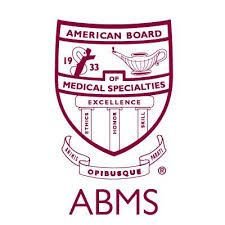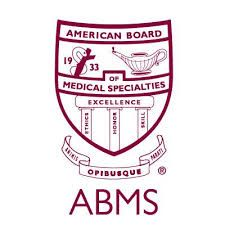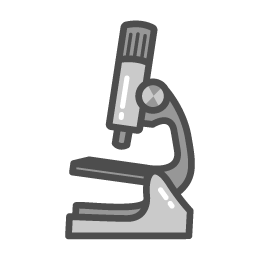
Join to View Full Profile
3181 SW Sam Jackson Park RdPortland, OR 97239
Phone+1 503-494-8617
Fax+1 717-531-5634
Dr. Cheng is on Doximity
As a Doximity member you'll join over two million verified healthcare professionals in a private, secure network.
- Gain access to free telehealth tools, such as our “call shielding” and one-way patient texting.
- Connect with colleagues in the same hospital or clinic.
- Read the latest clinical news, personalized to your specialty.
Summary
- I am a board-certified anatomic pathologist, molecular biologist and geneticist with experience in phage, bacterial, mouse, zebrafish, and human genetics. My PhD work with bacteriophage at the Fred Hutchinson Cancer Research Center focused on Chi hotspots of recombination. Biochemical and genetic studies of mutation in phage led to an understanding of the template vs substrate mechanisms of alternative mutations caused by the most common mutagenic form of oxidative damage, 8-hydroxyguanine (aka 8-oxoguanine). Increasingly collaborative work by my lab at Penn State has included 1) genetic screens for genes involved in somatic mutation, cellular atypia, and pleiotropy, 2) development of web-based atlas resources, 3) identification of a key gene involved in the evolution of light skin in Europeans, 4) demystification of skin color and race, and 5) development and application of a 3D from of histology based on microCT, called x-ray histotomography, being targeted for large-scale imaging capabilities for users globally, the development of a computational phenomics that will allow comprehensive whole-organism tissue phenotyping of mm to cm scale samples for genetic, disease, and environmental (including chemical) phenomics. The "Geometry of Life" component of our work is utilizing supervised machine learning to create mathematically-characterized models of living things, to ultimately include all cell types and tissues in all organisms, as a foundation for web-based, multi-scale, multi-omic integration towards greater understanding of life. 6) Since no one discipline or small number of disciplines will solve global problems themselves, we are now working with global partners to plan web- and community-based resources dedicated to systems thinking-based understanding of and solutions to global problems, centered on the idea that we can all contribute to the greater good, if we work together internationally, constructively, with a shared, unshakable focus on the high road.
Education & Training
 New York University School of MedicineClass of 1980
New York University School of MedicineClass of 1980
Certifications & Licensure
 American Board of Pathology Anatomic Pathology
American Board of Pathology Anatomic Pathology American Board of Psychiatry and Neurology Psychiatry
American Board of Psychiatry and Neurology Psychiatry American Board of Psychiatry and Neurology Child & Adolescent Psychiatry
American Board of Psychiatry and Neurology Child & Adolescent Psychiatry
Awards, Honors, & Recognition
- AAAS Fellow, Medical Sciences American Association for the Advancement of Science, 2020
Publications & Presentations
PubMed
- A web-based histology atlas for the freshwater sentinel species Daphnia magna.Mee S Ngu, Daniel J Vanselow, Carolyn R Zaino, Alex Y Lin, Jean E Copper
The Science of the Total Environment. 2025-01-01 - 2 citationsDevelopmental mouse brain common coordinate framework.Fae N Kronman, Josephine K Liwang, Rebecca Betty, Daniel J Vanselow, Yuan-Ting Wu
Nature Communications. 2024-10-21 - 1 citationsMonitoring mouse papillomavirus-associated cancer development using longitudinal Pap smear screening.Hannah M Atkins, Aysegul Aksakal Uslu, Jingwei J Li, Debra A Shearer, Sarah A Brendle
Mbio. 2024-08-14
Press Mentions
 New Way to Image Whole Organisms in 3D Brings Key Skin Color Pigment into FocusOctober 6th, 2021
New Way to Image Whole Organisms in 3D Brings Key Skin Color Pigment into FocusOctober 6th, 2021 New Way to Image Whole Organisms in 3D Brings Key Skin Color Pigment into FocusOctober 5th, 2021
New Way to Image Whole Organisms in 3D Brings Key Skin Color Pigment into FocusOctober 5th, 2021 New Technique Will Allow Pathologists to Study a Full Tissue Sample Without Tissue SlicingJune 14th, 2019
New Technique Will Allow Pathologists to Study a Full Tissue Sample Without Tissue SlicingJune 14th, 2019- Join now to see all
Grant Support
- Building a Wide-field, High-resolution Histotomography Resource for BiologyPENNSYLVANIA STATE UNIV HERSHEY MED CTR2024–2028
- Groundwork for a Synchrotron MicroCT Imaging Resource for Biology (SMIRB)PENNSYLVANIA STATE UNIV HERSHEY MED CTR2015–2025
- Web-Based Atlas Of Zebrafish Microanatomy As A Community ResourceNational Center For Research Resources2010–2011
- Genetic Analysis Of Genomic Instability And Cancer In ZebrafishNational Cancer Institute2008–2011
- Function Of Calcium Exchangers In Vetebrate PigmentationNational Institute Of Arthritis And Musculoskeletal And Skin Diseases2006–2010
- Virtual Microscopy Of Zebrafish As A Community ResourceNational Center For Research Resources2004–2010
- Function Of Calcium Exchangers In Vertebrate PigmentationNational Institute Of Arthritis And Musculoskeletal And Skin Diseases2008
- Generation Of MRI Correlates For The Lifespan Virtual Zebrafish AtlasNational Center For Research Resources2006
- A Histologic Screen For Cell Differentiation MutantsEunice Kennedy Shriver National Institute Of Child Health &Human Development2001–2005
- Vertebrate Model Of Differentiation/Tumor SuppressionNational Cancer Institute1997–1999
Research History
- Member, Penn State Institute for Computational and Data Science (ICDS) Faculty Advisory CouncilCollege of Medicine representative to the high-interdisciplinary Penn State Institute for Computational and Data Sciences, which involves brainstorming, strategic planning and execution of ICDS goals.2020 - Present
- Member, Penn State RCCI Executive Committee2019 - Present
- Director, Penn State Computational Phenomics InitiativeFounder and Director of Penn State-wide activities around the concept of Computational Phenomics, including imaging, cloud-based 3D imaging tool utilization and development, computational segmentation, modeling, and deep integration of data across phylogeny, length scales, and technologies.2019 - Present
- Penn State RCCI (Research Computing and Cyberinfrastructure) Working groupRepresenting the College of Medicine in matters relating to research computing and cyberinfrastructure, with a focus on Emerging Technologies2017 - Present
- Professor of Pathology2007 - Present
- Director of Experimental PathologyFacilitation of Research in the Department, Mentoring2008 - 2019
- Associate Professor of PathologyResearch and Teaching1998 - 2007
- Assistant Professor of PathologyResearch and Teaching1992 - 1998
External Links
- Cheng Lab Researchhttp://chenglab.io
- Cross-phylogenetic histological Atlashttp://bio-atlas.psu.edu
- 3D microanatomic viewerhttp://3d.fish
Viewing the full profile is available to verified healthcare professionals only.
Find your profile and take control of your online presence:









